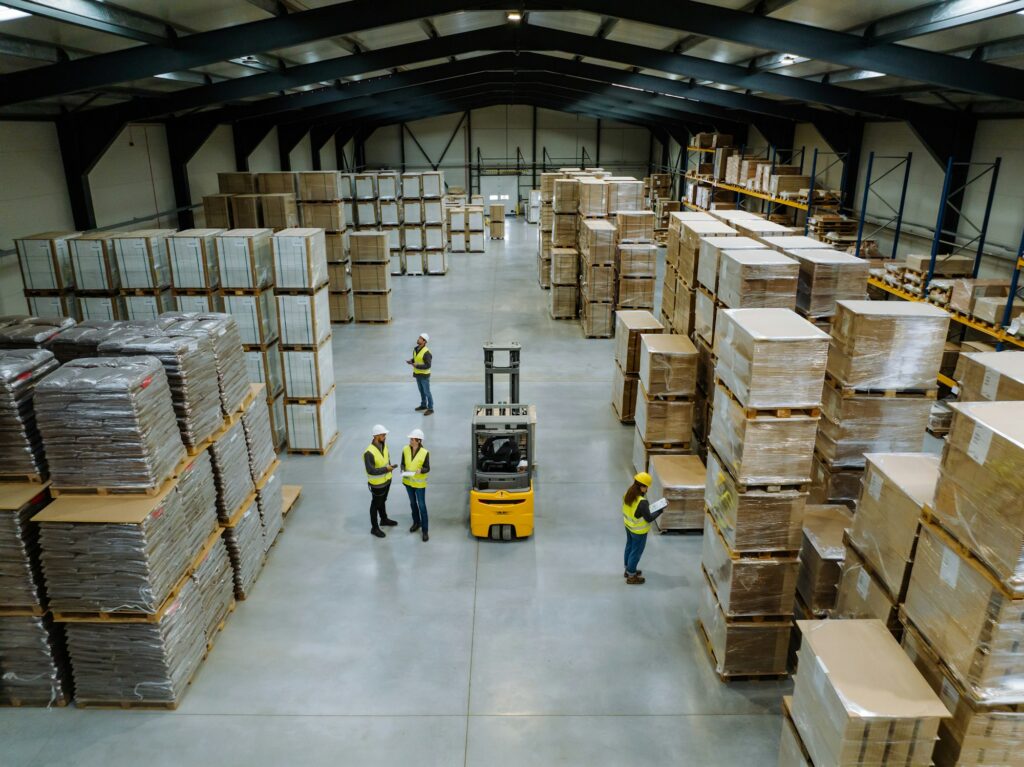With the growing connectivity needs of equipment (radio frequency, robotics, vision, etc.), the warehouse network has become much more than a simple technology. The stability of connections, the eradication of shadow zones and saturation, all have a bearing on operations and the overall efficiency of a logistics site. Let's find out why Wi-Fi in connected warehouses is so strategic, and what solutions need to be put in place to turn it into a real performance driver.
The challenges of WiFi in connected warehouses: far from a simple wireless network
The quality of the WiFi network has a direct impact on warehouse activity and is a determining factor in the day-to-day processing of flows. A good WiFi network is :
- Optimising operational efficiency across the board thanks to equipment used to its full potential
- Enable operators to work simultaneously with datawithout compromising the traceability of warehouse assets
- Maintaining an optimum level of safetythe wireless connection providing continuous power to the video surveillance devices
- Enabling the development of an ecosystem of third-party solutions to improve the quality and performance of processes
The challenges raised by the connected warehouse
Adapting infrastructure to the complexity of the logistics environment
From the perspective of WiFi network optimisationThe complexity of the logistics environment is a major factor. Storage racks, industrial machinery and variations in stock volumes can compromise signal propagation in the warehouse, creating shadows, disturbances and dead spots.
Device density: responding to connection overload
With the proliferation of radio frequency equipment (scanners, tablets, printers, etc.), robots and vision systems, connected warehouses concentrate a high density of equipment sharing a limited bandwidth, which can lead to network saturation. If WiFi is not correctly sized to handle this traffic, performance deteriorates, slowing down operations and increasing errors.
Maintaining stable connectivity for operational staff
Operators are constantly on the move, moving from one area to another with their connected equipment. This constant mobility exposes the WiFi network to the challenges of managing a seamless transition from one access point to another. Without a suitable connection, this can lead to connection interruptions, disrupting critical operations such as picking or bursting. Whether it's a question of synchronising data in real time, guaranteeing the fluidity of operations or ensuring seamless traceability, optimal connectivity is the foundation on which WiFi performance in connected warehouses is built. Ultimately, the network determines not only how innovations work, but also their ability to deliver on their promises.
Given these challenges, the choice of your integrator is essential to guarantee the success of your project. Thanks to his expertise, he will carry out a preliminary radio audit directly on site and design a tailor-made network architecture for your warehouse. This approach will ensure optimum coverage for all the strategic areas of the site, with a coherent network of access points.
Wi-Fi: E-Dentic expertise
Leaders in connected warehousing for over 10 years, we've made Wi-Fi a pillar of logistics performance. Thanks to our expertise, we design and deploy tailor-made network solutions, adapted to the specific needs of each warehouse, to guarantee reliable connectivity.
WiFi at the heart of the connected warehouse
Adapting the network to the complexity of the logistics environment
In recent years, the digitalisation of operational data has made WiFi connectivity essential in warehouses. This trend is set to continue: every year we see the emergence of ever more innovative solutions, but these are dependent on reliable and extensive connectivity (video tracking, RF equipment etc.).




